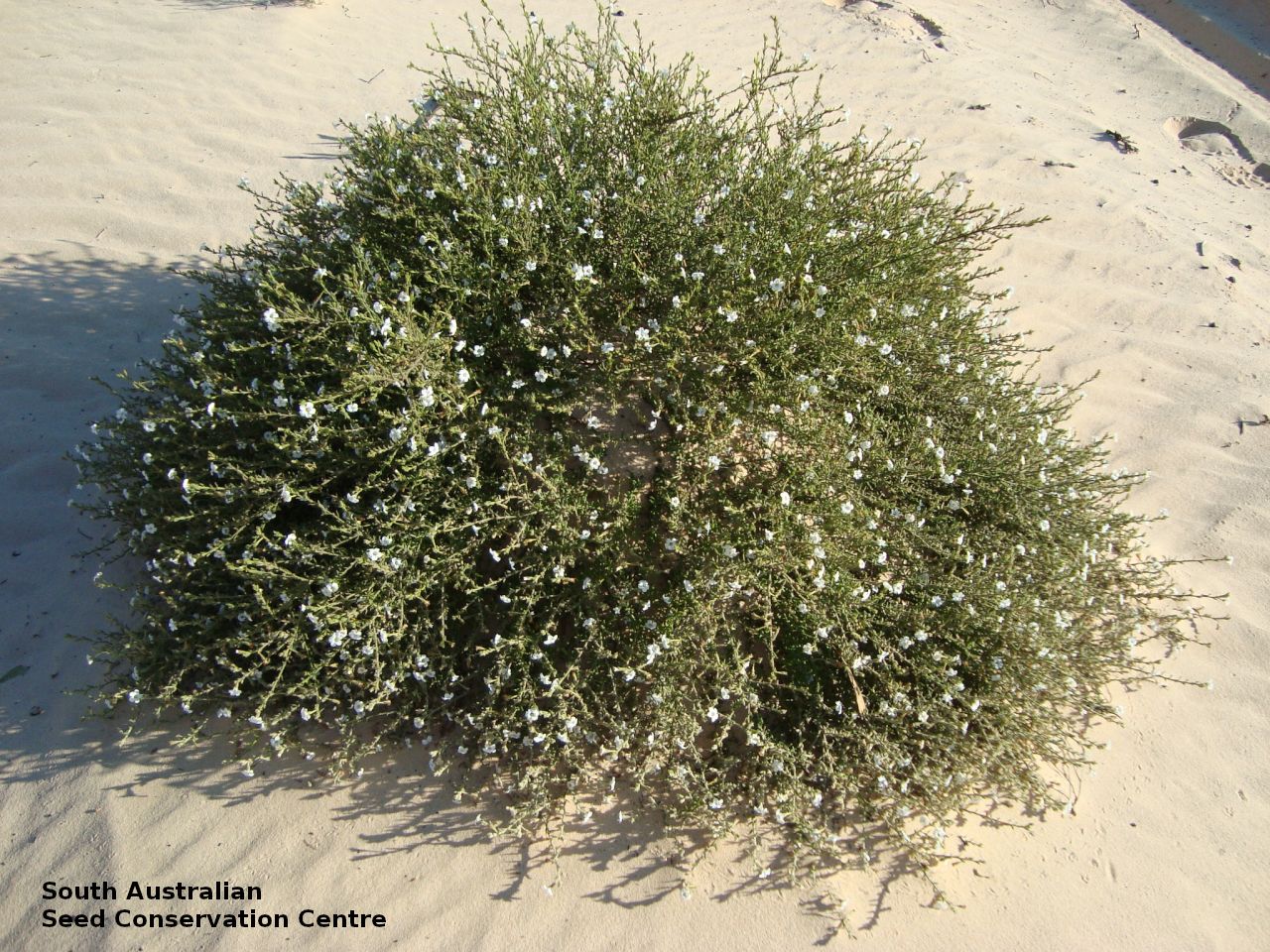
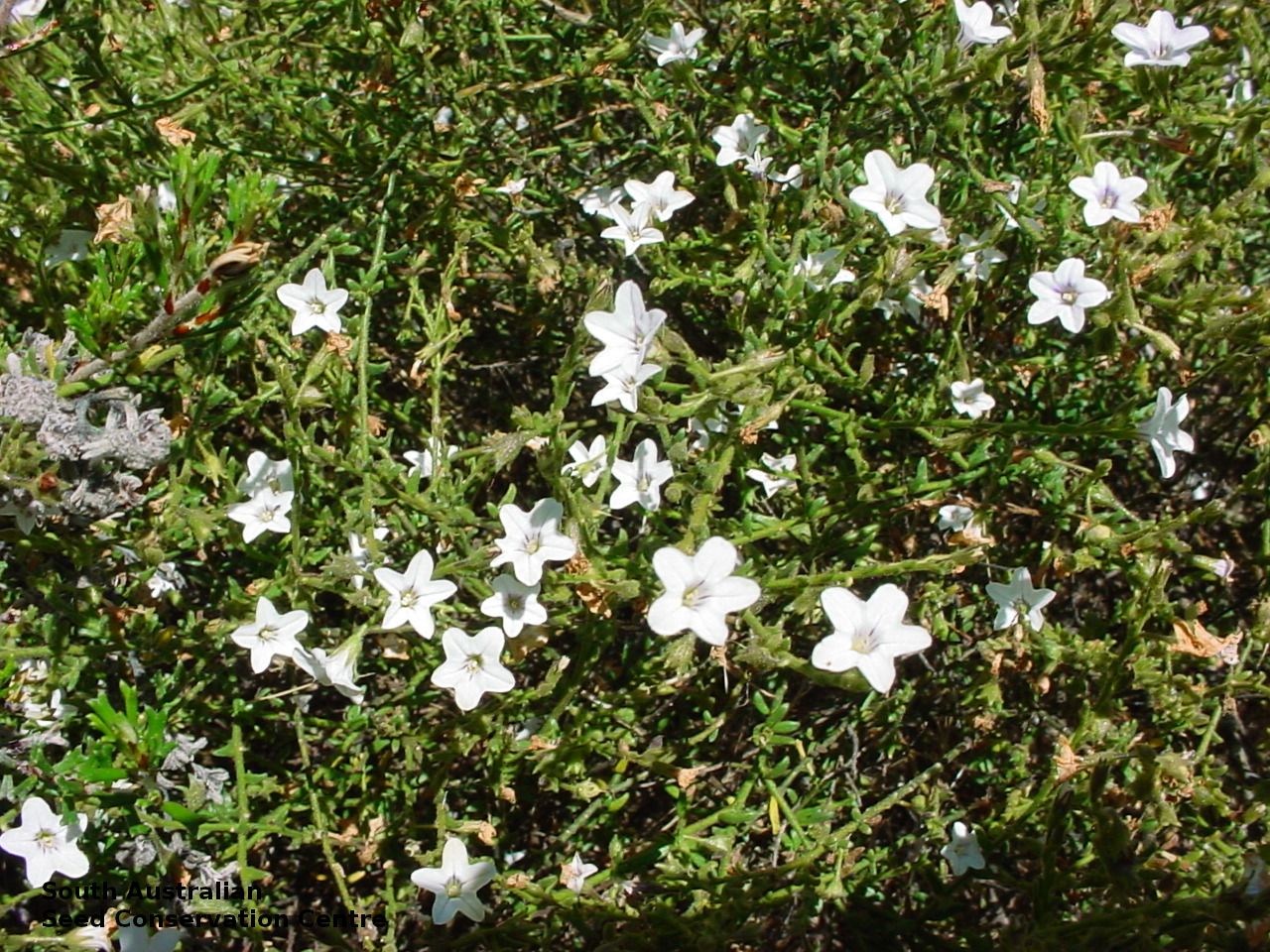
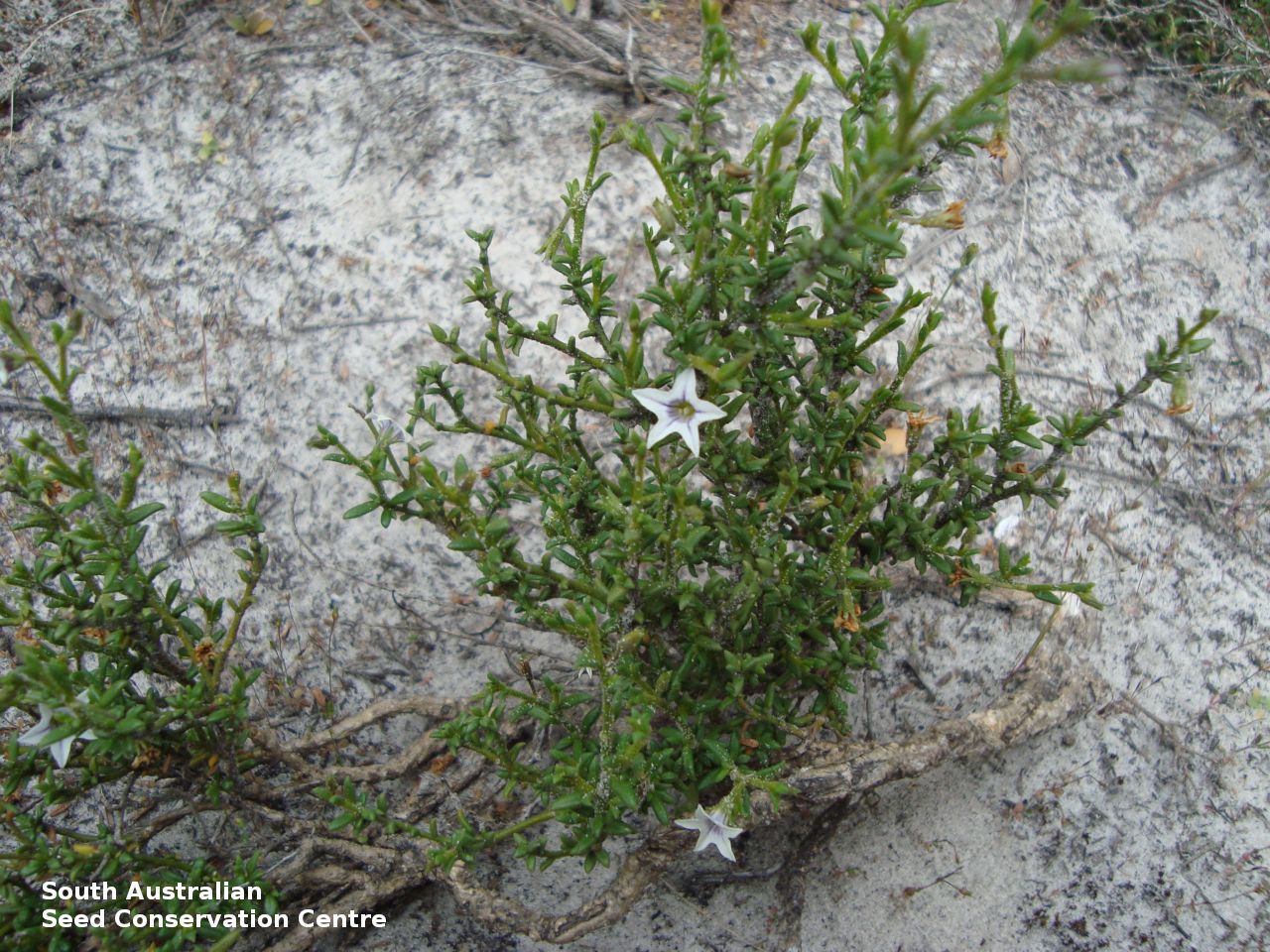
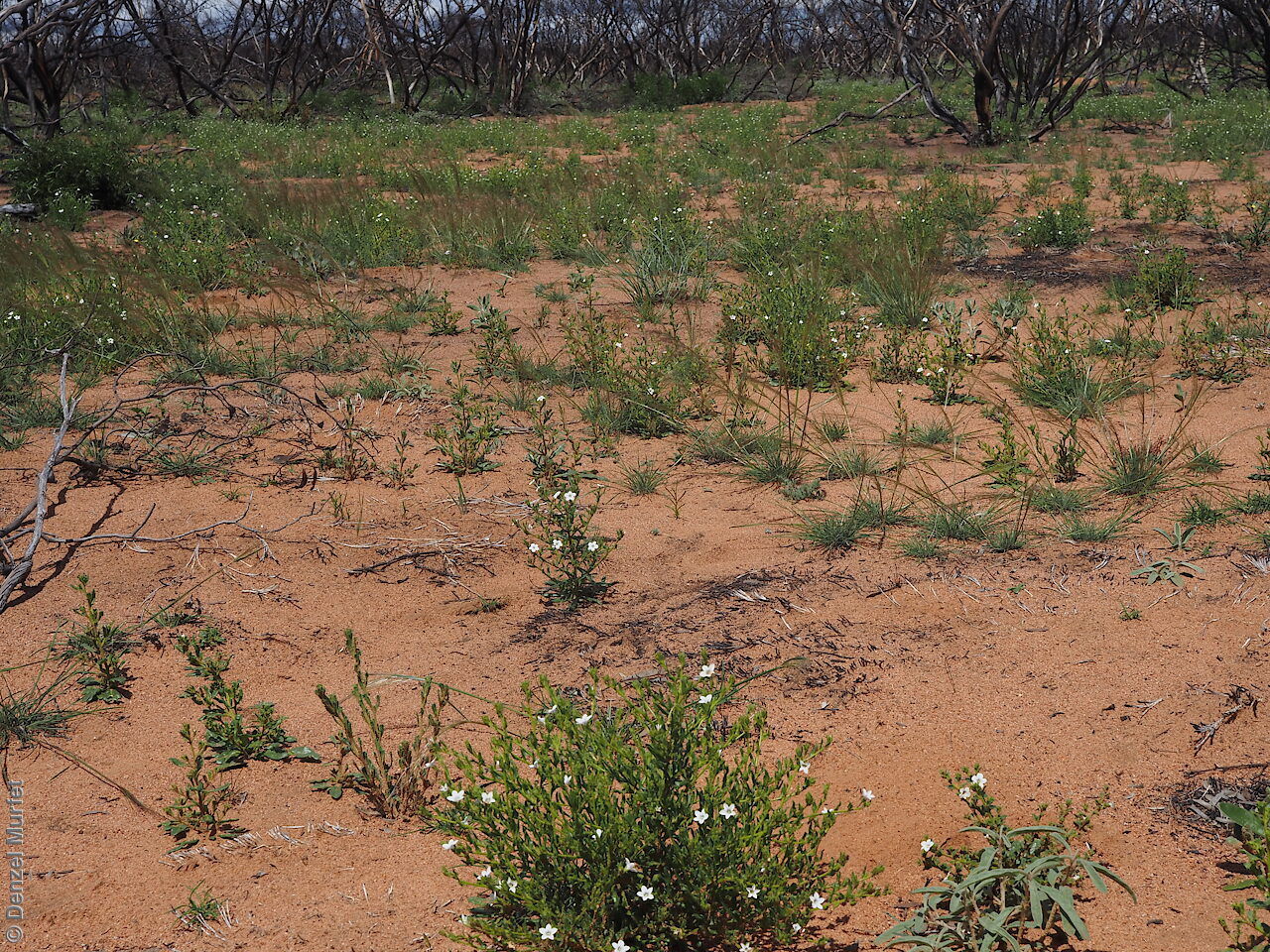
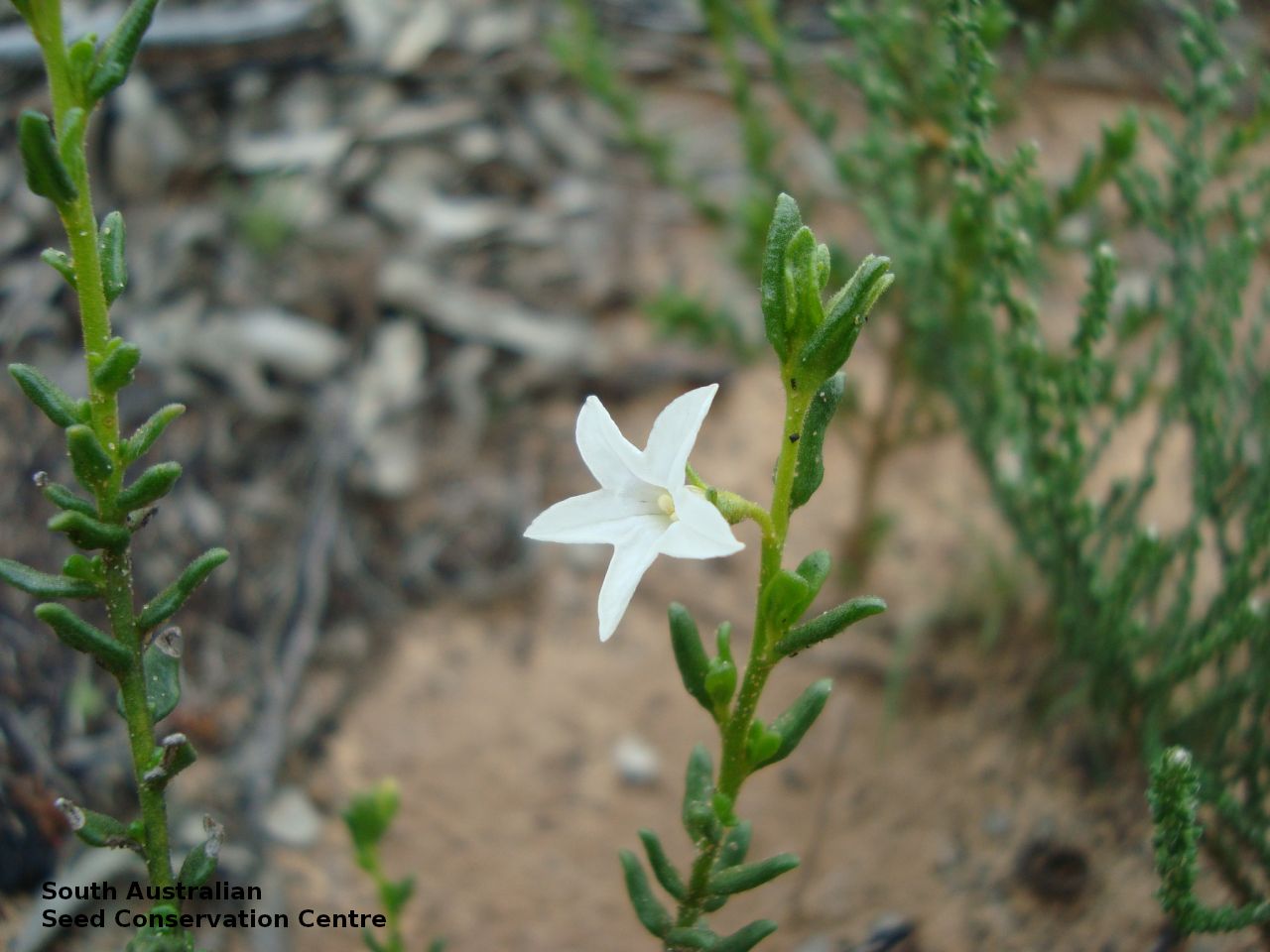
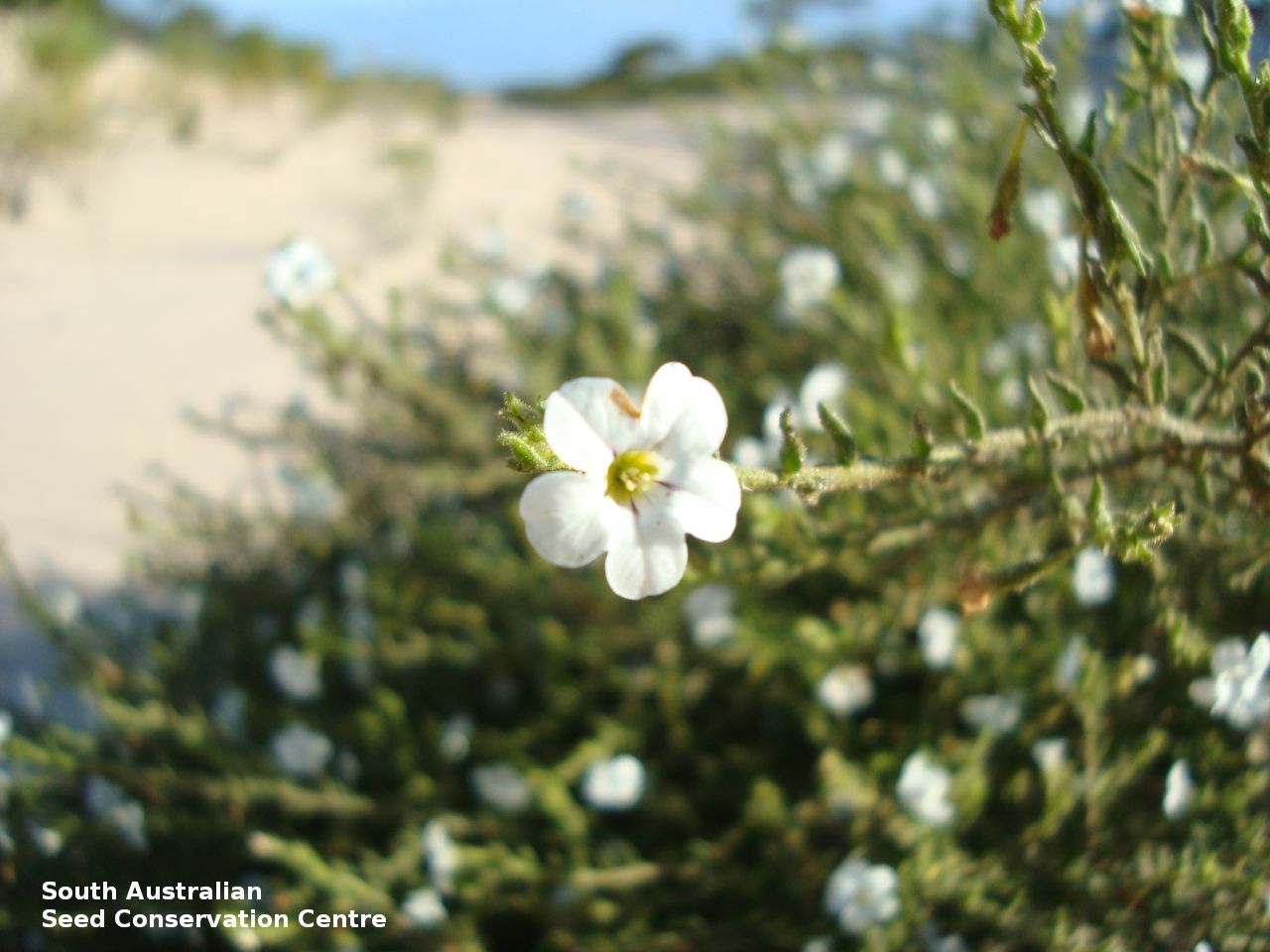
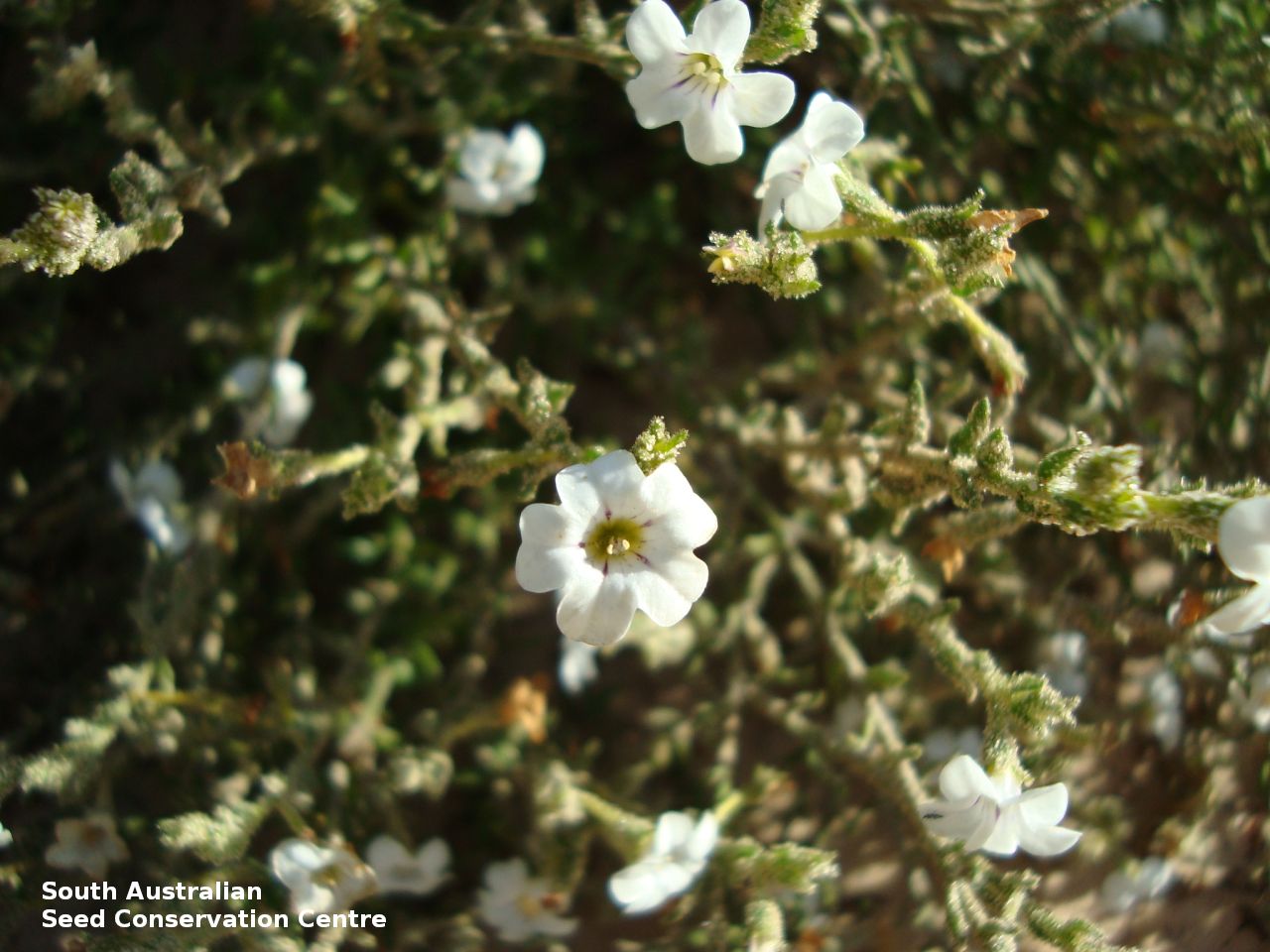
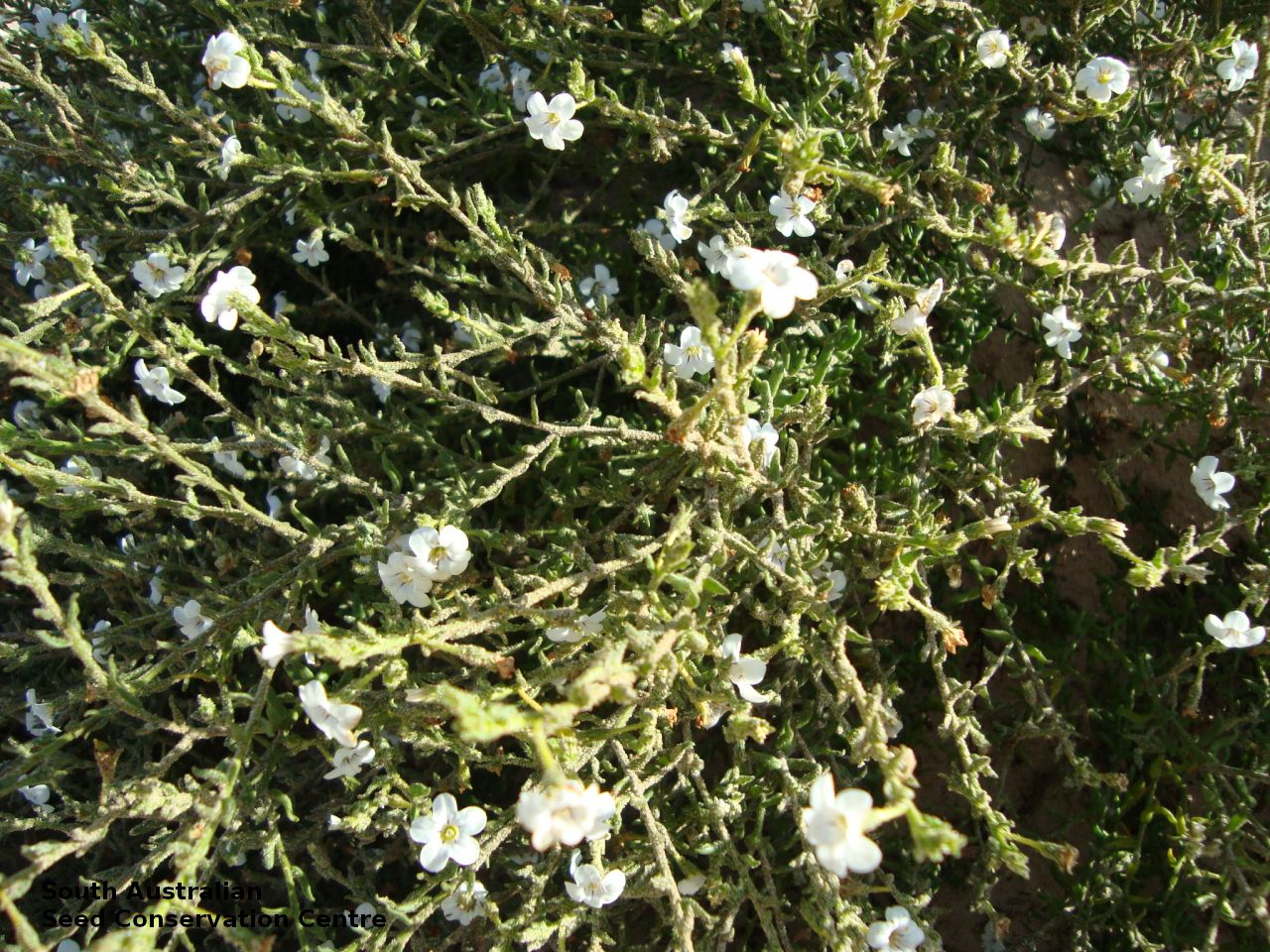
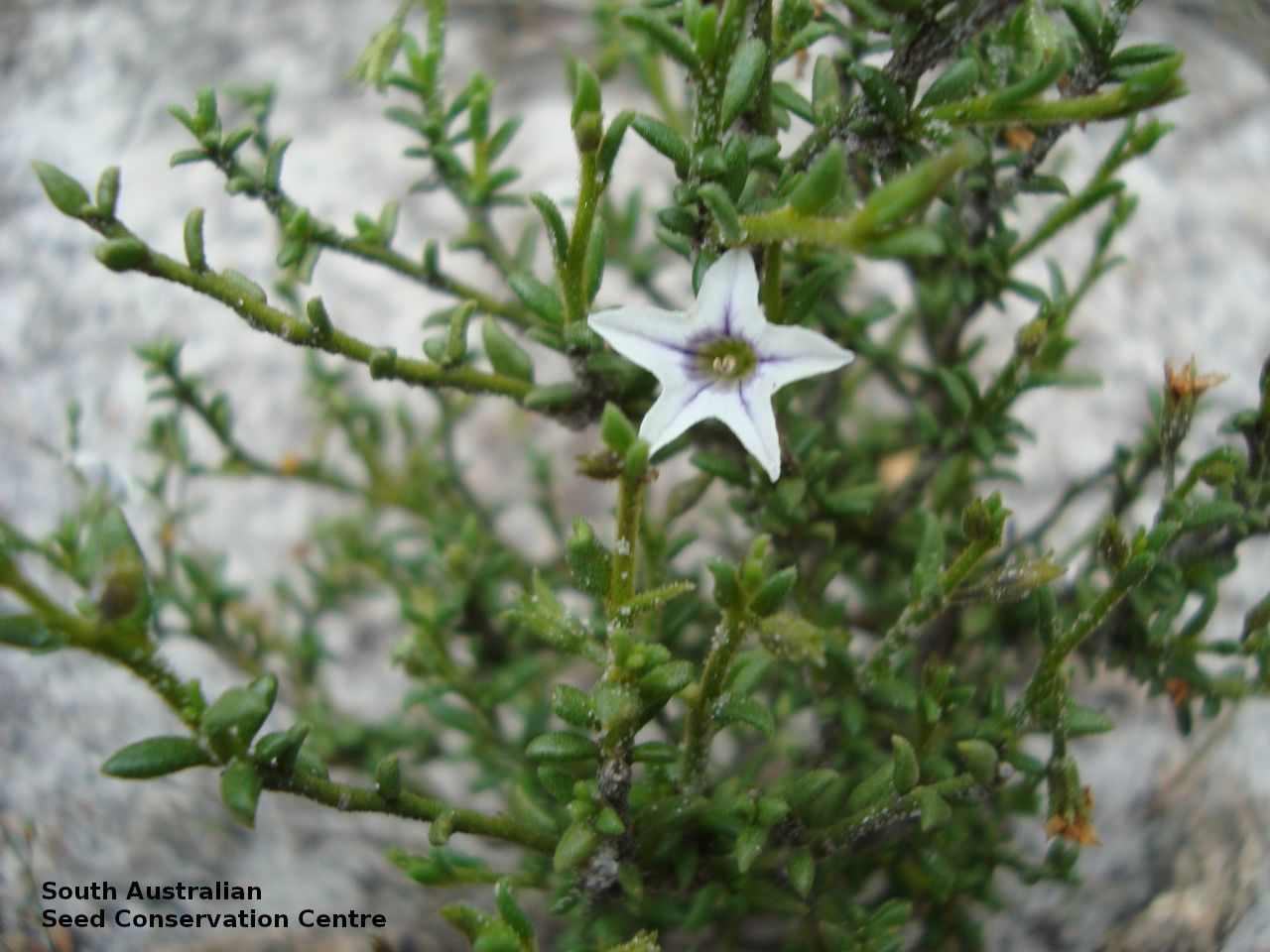
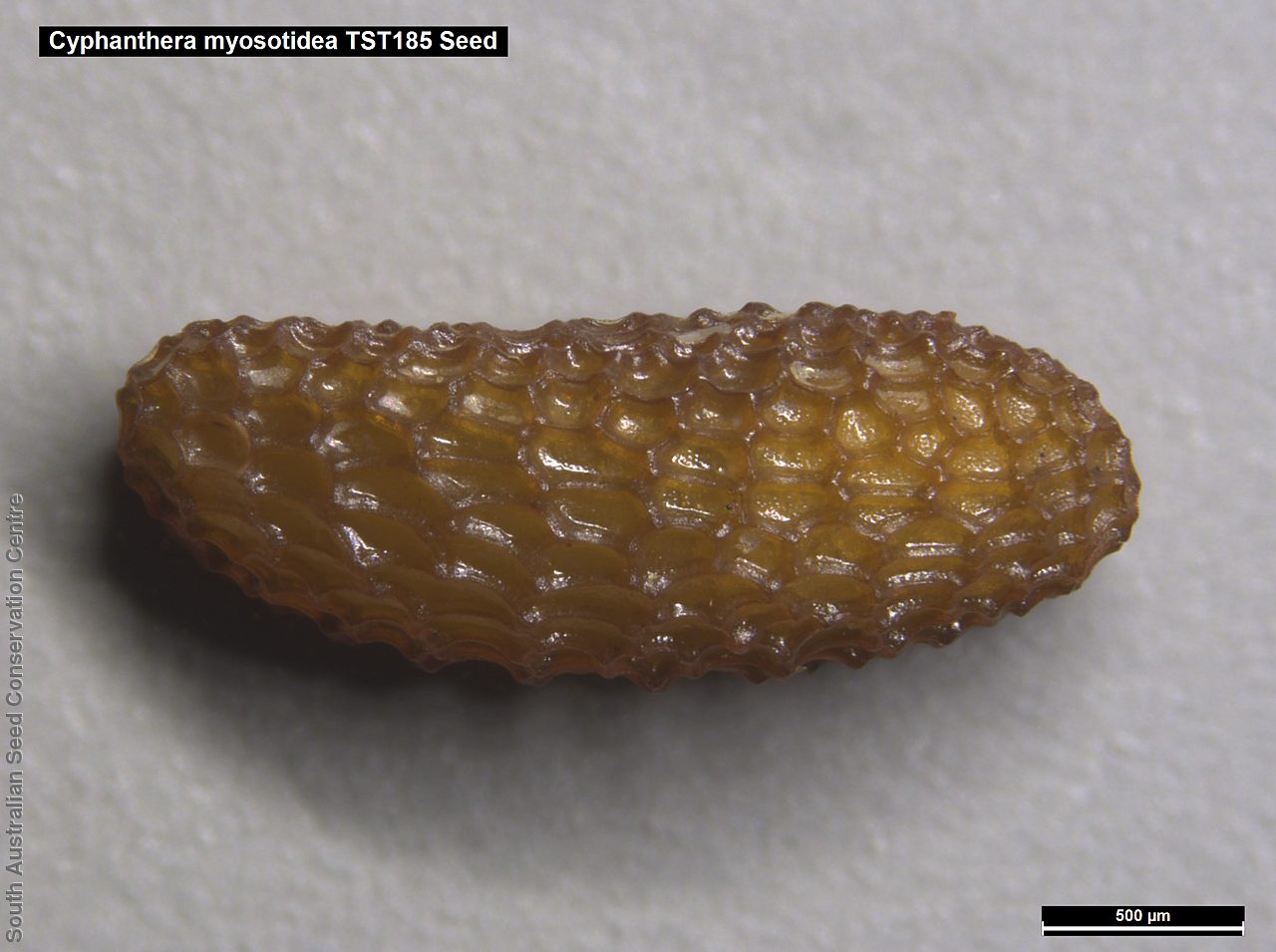
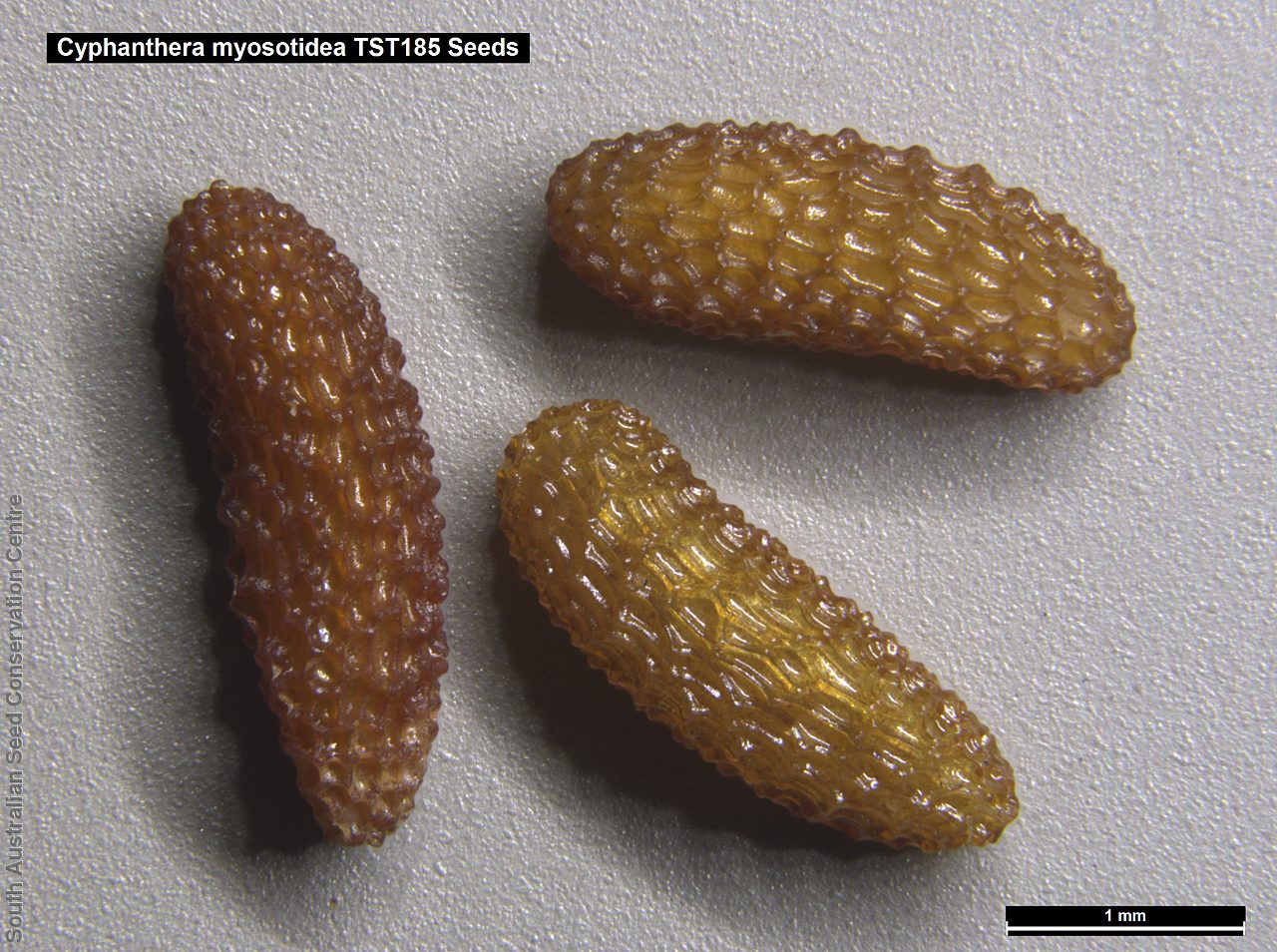


Botanical art
Prior names
Anthocercis myosotidea
Anthocercis amblyantha
Common names
Forget-me-not Ray-flower
Small-leaf Ray-flower
Etymology
Cyphanthera from the Greek 'cyphos', meaning bent forwards and 'antheros' meaning an anther, referring to horseshoe-shaped anthers. Myosotidea means having resemblance to the genus Myosotis (forget-me-not).
Distribution and status
Found on Eyre Peninsula, Kangaroo Island and the Murray in South Australia growing in mallee on sandy soil, usually in disturbed sites. Also found in Victoria. Native. Common in South Australia. Common in the other States. More common after fire.
Herbarium regions: Gairdner-Torrens, Eyre Peninsula, Murray, Kangaroo Island
NRM regions: Eyre Peninsula, Kangaroo Island, South Australian Arid Lands, South Australian Murray-Darling Basin
AVH map: SA distribution map (external link)
Plant description
Rounded undershrub to 30 cm tall and 45 cm wide, with branches covered in hairs. Leaves oblong, elliptic or ovate; sessile or almost so, to 10 mm long and 4 mm wide, green, covered in hairs. Inflorescence solitary or in 1–3 clusters with white with purple striated flowers. Flowers mainly in spring. Fruits are brown globose to broadly ovoid capsule to 4 mm long, containing numerous seeds. Seeds are light brown oblong to bean-shaped seed to 3 mm long and 1 mm wide, with a mesh-like surface. Seed embryo type is linear fully developed.
Seed collection and propagation
Collect seeds between October and December. Collect capsules that are maturing, fat, turning a straw colour and contain hard brown seeds inside. Monitor the plants as the capsules will dry, split and disperse the seeds in a short space of time. Using of a small bag (ie. Organza bags) to enclose the developing capsules will help to increase the chances of collecting sufficient viable seeds. More common post fire. Place the capsules in a tray and leave to dry for one to two weeks. Then rub the capsules gently by hand or with a rubber bung to dislodge the seeds. Use a sieve to separate the unwanted material. Store the seeds with a desiccant such as dried silica beads or dry rice, in an air tight container in a cool and dry place. From one collection, the seed viability was average, at 75%. This species has physiological dormancy that need to be overcome for the seed to germinate (i.e a fire responsive species).
| Location | No. of seeds (weight grams) | Number of plants | Date collected | Collection number Collection location | Date stored | % Viability | Storage temperature |
|---|---|---|---|---|---|---|---|
| BGA MSB | 1,800 (1.3 g) 1,800 (1.3 g) | 50 | 15-Oct-2007 | TST185 Eyre Peninsula | 19-Sep-2008 | 75% | -18°C |
Number of plants: This is the number of plants from which the seeds were collected.
Collection location: The Herbarium of South Australia's region name.
% Viability: Percentage of filled healthy seeds determined by a cut test or x-ray.